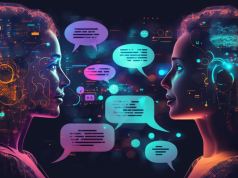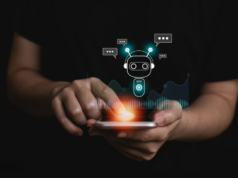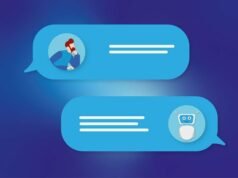In today’s fast-paced and competitive business environment, organizations are continuously seeking innovative solutions to enhance productivity, creativity, and efficiency. Artificial Intelligence (AI) has emerged as a powerful tool, transforming how we work, brainstorm, edit, and explore new ideas. This article delves into the multifaceted benefits of AI in the workplace, exploring its impact on summarizing meetings, generating and debugging code, and automating repetitive tasks.
AI and Idea Generation
One of the most significant advantages of Artificial Intelligence is its ability to assist in idea generation and brainstorming. Traditionally, brainstorming sessions relied heavily on human input, often limited by the participants’ perspectives and experiences. AI, however, can analyze vast amounts of data and provide fresh insights that might not be immediately apparent to humans.
Enhancing Creativity with AI
AI algorithms can sift through extensive datasets to identify patterns and correlations that can inspire new ideas. For instance, marketing teams can leverage Artificial Intelligence to analyze consumer behavior, social media trends, and market dynamics, generating innovative campaign ideas that resonate with the target audience. By offering a broader range of possibilities, AI expands the creative potential of human teams, leading to more diverse and impactful solutions.

Collaborative Brainstorming
AI-powered tools can facilitate collaborative brainstorming sessions by providing real-time suggestions and feedback. Platforms like IBM’s Watson or OpenAI’s GPT-4 can interact with team members, posing questions, suggesting alternatives, and refining ideas. This interactive approach ensures that brainstorming sessions are dynamic and productive, leading to more refined and actionable ideas.
Summarizing Meetings for Better Decision-Making
Meetings are an integral part of any organization, but they can also be time-consuming and, at times, inefficient. Artificial Intelligence has the potential to revolutionize how we conduct and derive value from meetings by providing automated summarization and analysis.
Real-Time Meeting Summarization
AI-powered tools like Otter.ai and Zoom’s Artificial Intelligence integration can transcribe meetings in real-time, creating accurate and comprehensive summaries. These tools can highlight key points, action items, and decisions made during the meeting, ensuring that nothing is overlooked. This allows team members to focus on the discussion rather than taking notes, leading to more engaged and productive meetings.
Enhanced Follow-Up and Accountability
Automated summaries also facilitate better follow-up and accountability. By clearly outlining action items and assigning responsibilities, AI-generated summaries ensure that everyone knows their tasks and deadlines. This reduces the likelihood of misunderstandings and enhances overall project management efficiency.
Increasing Productivity Through Code Generation and Debugging
For software development teams, Artificial Intelligence offers significant benefits in generating and debugging code. These capabilities not only speed up the development process but also improve the quality and reliability of the code.

AI-Assisted Code Generation
AI tools like GitHub Copilot and Tabnine can assist developers by generating code snippets based on natural language prompts. This allows developers to quickly implement common functions and components, reducing the time spent on routine coding tasks. Additionally, AI-generated code can serve as a starting point for more complex implementations, providing developers with a solid foundation to build upon.
Streamlining Debugging Processes
Debugging is often a tedious and time-consuming process. AI-powered debugging tools can analyze code, identify potential issues, and suggest fixes. These tools can also learn from past debugging sessions, continuously improving their accuracy and effectiveness. By automating the debugging process, developers can focus on more strategic tasks, enhancing overall productivity and code quality.
Automating Repetitive Tasks
Repetitive tasks can drain valuable time and energy from employees, hindering their ability to focus on more critical and strategic activities. AI-driven automation offers a solution by taking over these mundane tasks, allowing employees to allocate their time and effort more effectively.
Automating Administrative Tasks
AI can automate a wide range of administrative tasks, from scheduling meetings and managing emails to processing invoices and generating reports. Tools like Zapier and Microsoft Power Automate can integrate with various software applications, creating automated workflows that streamline routine processes. This not only saves time but also reduces the risk of human error, ensuring greater accuracy and efficiency.
Enhancing Customer Service
AI-powered chatbots and virtual assistants are transforming customer service by providing instant and accurate responses to customer inquiries. These tools can handle a high volume of queries simultaneously, ensuring that customers receive timely support. Additionally, Artificial Intelligence can analyze customer interactions to identify common issues and suggest improvements, leading to a better overall customer experience.

The Future of AI in the Workplace
The integration of AI into the workplace is still in its early stages, but its potential is vast. As AI technology continues to evolve, we can expect even more advanced and sophisticated applications that further enhance productivity, creativity, and efficiency.
Ethical Considerations and Challenges
While AI offers numerous benefits, it also raises important ethical considerations and challenges. Organizations must ensure that AI is used responsibly, with a focus on transparency, fairness, and accountability. This includes addressing potential biases in Artificial Intelligence algorithms, protecting employee privacy, and ensuring that AI-driven decisions are explainable and justifiable.
Continuous Learning and Adaptation
To fully harness the power of Artificial Intelligence, organizations must foster a culture of continuous learning and adaptation. This involves investing in employee training and development, ensuring that teams are equipped with the skills and knowledge needed to work effectively with Artificial Intelligence tools. By embracing a growth mindset, organizations can stay ahead of the curve and maximize the benefits of AI.
Conclusion:
AI is transforming the modern workplace, offering unprecedented opportunities to enhance productivity, creativity, and efficiency. From idea generation and meeting summarization to code generation and task automation, AI-powered tools are revolutionizing how we work and collaborate. As AI technology continues to advance, organizations that embrace its potential and address its challenges will be well-positioned to thrive in the digital age. By leveraging Artificial Intelligence, businesses can unlock new levels of innovation and performance, driving success in an increasingly competitive landscape.









